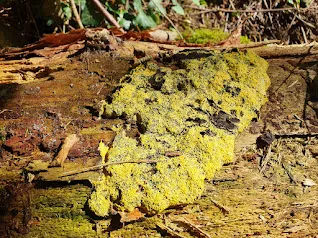In Depth
| Flowers of Tan |
|---|
Title: Flowers of Tan: Unveiling the Enigmatic Beauty of Slime MouldsIn the mysterious world of fungi and microorganisms, where beauty often emerges from the unexpected, one group of organisms stands out for its peculiar yet captivating appearance. Meet the Slime Moulds, a diverse and fascinating group of organisms that defy traditional classification and captivate the imagination with their unique life cycles and striking forms. Among them, the "flowers of tan" represent a particularly intriguing phenomenon, offering a glimpse into the hidden wonders of the microbial world. Join us as we explore the enigmatic beauty of these extraordinary organisms and unravel the mysteries of their existence. Botanical Charms: Slime Moulds, despite their name, are not fungi but rather belong to the kingdom Protista. They are primitive organisms that exist as single-celled amoebas or multicellular aggregations, depending on their life stage. The "flowers of tan" refer to the reproductive structures of certain slime mould species, which can resemble delicate flowers or intricate patterns on forest floors, tree trunks, or decaying organic matter. These structures, typically tan or brownish in color, emerge as the slime mould completes its life cycle and prepares to release spores for reproduction. Life Cycle: The life cycle of slime moulds is a complex and fascinating process that involves distinct phases of growth, aggregation, and reproduction. Slime moulds begin their life cycle as individual amoeboid cells or plasmodia, which feed on bacteria, fungi, and organic matter in their environment. As conditions become unfavorable or food sources diminish, the cells aggregate together to form visible structures known as fruiting bodies. These fruiting bodies, including the "flowers of tan," serve as reproductive structures that produce and release spores into the surrounding environment, allowing the slime mould to disperse and colonize new habitats. Ecological Significance: While slime moulds may seem inconspicuous or even insignificant to the casual observer, they play a crucial role in nutrient cycling and ecosystem dynamics. As decomposers, slime moulds help break down organic matter and recycle nutrients, contributing to the decomposition of leaf litter, dead wood, and other organic materials. Moreover, their presence in forest ecosystems can influence microbial communities, soil structure, and plant health, ultimately shaping the diversity and resilience of natural habitats. Scientific Curiosity: Beyond their ecological significance, slime moulds have long fascinated scientists and researchers with their unique behaviors and evolutionary adaptations. Despite lacking complex organs or nervous systems, slime moulds exhibit remarkable abilities to navigate their environment, solve mazes, and make complex decisions based on environmental cues. These cognitive abilities, combined with their ability to form intricate structures such as the "flowers of tan," challenge our understanding of intelligence and consciousness in the natural world, sparking ongoing scientific inquiry and exploration. Conclusion: In the intricate tapestry of microbial life, the "flowers of tan" emerge as a symbol of beauty, resilience, and scientific curiosity. From their delicate forms to their essential role in ecosystem functioning, these enigmatic structures invite us to ponder the hidden wonders of the microbial world and appreciate the intricate web of life that sustains ecosystems. As we continue to explore the mysteries of slime moulds and other microorganisms, let us embrace the beauty and complexity of nature's smallest wonders, inspiring awe and wonder in the hearts of all who seek to understand the secrets of life itself. |

